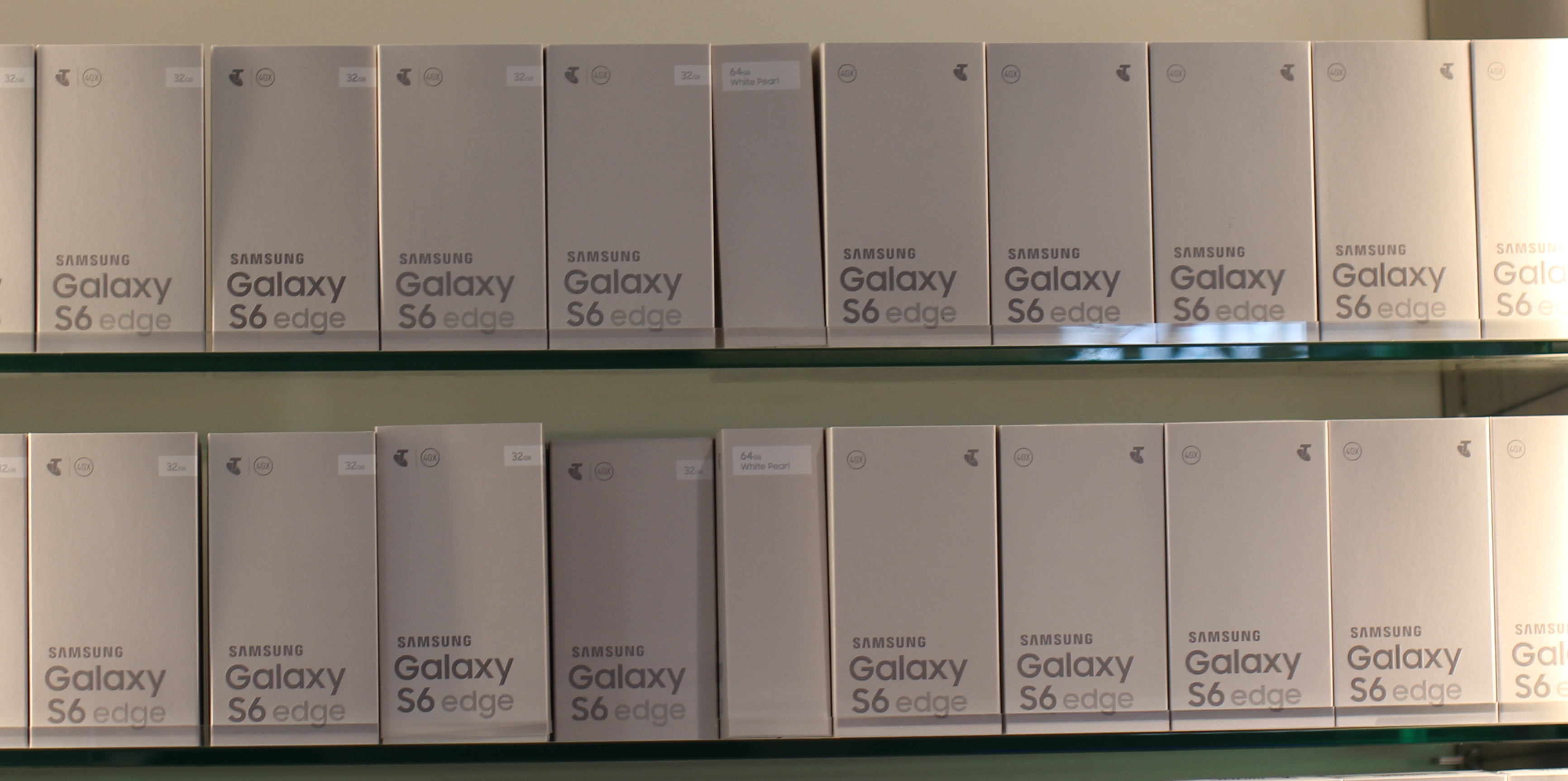
I think we need to have a bit of a chat about battery life. Here at Ausdroid, we get the privilege of using quite a number of handsets, and we get a good opportunity to compare an awful lot of them. Sometimes these comparisons are favourable one way, and sometimes less favourable another.
We’re still getting to know the Samsung Galaxy S6 Edge, but like that new friend who has an annoying laugh that grates, the S6 Edge’s battery life is already starting to make us a little uncomfortable. Rather than get up and walk away, let’s try and talk about this.
What are the facts?
The S6 Edge features a 2,600 mAh battery.
How does it compare?
Well, the phone it sort-of replaces, the Galaxy S5, had a larger capacity battery at 2,800 mAh. LG’s G3 is larger still, at 3,000 mAh, and then we get onto the insanely big end of the battery market, with the Xperia Z3 at 3,100 mAh and Galaxy Note 4 at 3,220 mAh.
One must bear in mind, though, that the innards of the S6 Edge (and the S6, which is virtually identical) are quite a bit different to most of those other listed smartphones though. Factors which probably affect battery life more than others include the 64-bit Octa-Core CPU, which while powerful, is also quite thirsty (it would appear).
How does it compare?
The short answer is not especially well. It might be that I’ve been a bit spoiled by the Xperia Z3, but there’s something that Sony has got right which really needs to be replicated across the Android platform. By default, without the power saving features activated, the Xperia Z3 battery is not great, despite its significant size. Even still, it did last from morning until mid-afternoon despite quite heavy usage, before needing a bit of a charge.
Once I discovered the Stamina mode, though, the Xperia Z3 went from a ‘most of the day’ phone, to a ‘couple of days’ phone, without any noticeable sacrifice in functionality. It’s just mindboggling that in this day and age of smartphones that last a day or so that Sony has hit one out of the park, with a handset that could last two days (or maybe more) of reasonably average use.
The S6 Edge certainly can’t emulate this. In fact, without power saving mode on, I believe it’d struggle to last half a day without needing a charge. Samsung has included a power saving feature, to be sure, but it just doesn’t seem to really do all that much.Still, by 2pm, with a morning of reasonably average use, I was down to 20% and looking for a power point, and this isn’t the first time.
What can we do?
Unlike previous Samsung Galaxy S-line devices, we can’t just grab an extra battery and carry it around with us, because Samsung has made the decision to seal in the battery, making it non-swappable. This means that you either need to (a) adjust your usage patterns quite significantly, (b) carry around a charger or turbocharger, or (c) make frequent use of charging cables, e.g. at your desk, in the car, and wherever you spend a bit of time.
Frankly, none of these are great options. I’ve long made light of iPhone users who are virtually tethered to walls, cars or desks because their phones go flat so quickly when not charging. One need only walk around an airport and most of the phone users sneaking power out of the walls will be iPhone users.
I don’t think we should have to join them.
Having access to a turbo charger does make some difference — half an hour on charge will give you a ~50% increase in charge, and you can achieve a full charge in around an hour or so. If you’ve got one at your desk, and charge your phone up when you get back after lunch, you’ll be right until that night. Alternatively, having a Qi charging pad at your desk or wherever is a good compromise. Whenever you’re not using your phone, instead of placing it in your pocket or on your desktop, place it on the Qi pad instead, and you’ll keep it topped off for when you have to head out away from power.
Undoubtedly, with the S6 (and S6 Edge) bound to become popular devices, Mophie and companies like them will release battery add-on cases that add an extra 50-100% capacity to the phones, at the expense of a bit of thickness. Mophie already have one in the works which adds a 3,300mAh battery to the S6 Edge, taking its total capacity to 5,900 mAh (which would rival many smaller tablets).
Whether you want to add such a (relatively significant) add-on to your phone is a tough call; yes it’ll add more battery capacity (significantly more), but it also makes your slender, $1000 smartphone significantly fatter and less easy to carry around. Whether the trade-off is worth it will be a very subjective decision.
What can Samsung (and other OEMs) do?
For starters, they can simply include bigger batteries. I think they’ll find that while consumers love a thin, well designed phone, they’d accept an extra millimetre or two of thickness if it meant the ability to use a smartphone as it was intended, for a full day, without needing to find a charger before the evening.
Of course there’ll be outlier days; you make a hundred and one calls, or browse the web for a few hours during transit, and few phones will survive a day in such an environment. However, for the other 90% of the time, being able to get through the day is an absolute must.
Big companies are investing in battery technology research. Apple, Tesla and Google amongst them, and I’d be amazed if Samsung aren’t doing some research in this area too. That research will take time to pay off, but it absolutely must be pursued.
In the meantime, we, the users, just have to grin and bear it. We either want the latest phone with all the bells and whistles, and we accept whatever mediocre battery life we can extract from it, or we make do with the technology that’s not quite the latest and greatest, but can at least meet the requirements of our busy (untethered) lives.
What are your experiences with battery life in modern smartphones? Have you taken the plunge on an S6 or S6 Edge yet? How are you finding it? What tricks are you using to extract more battery life?




